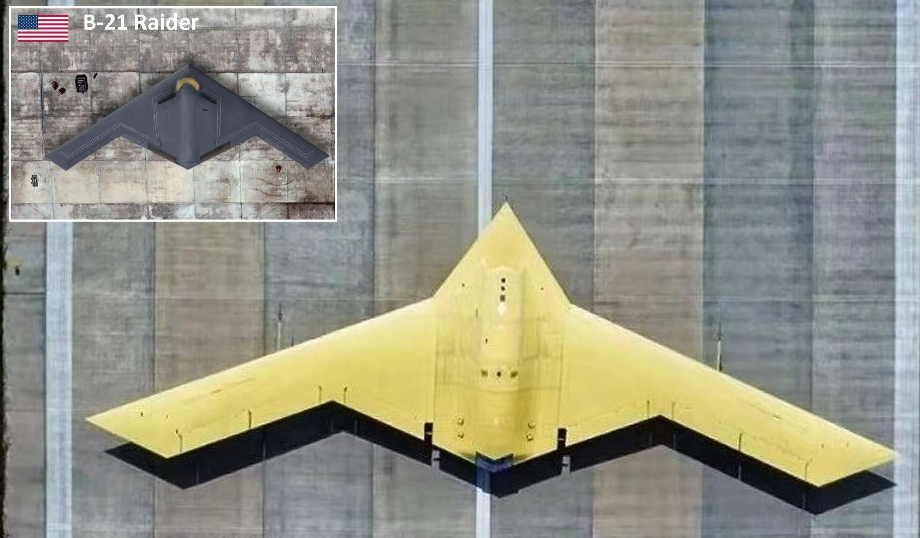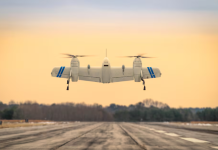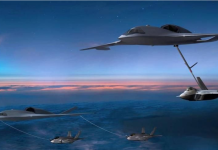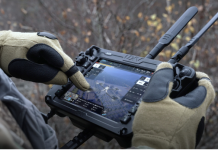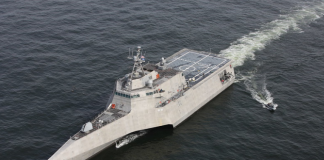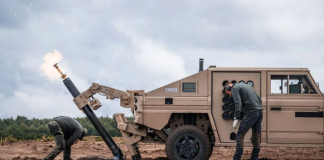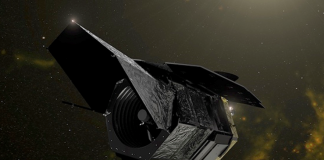China has officially unveiled the first visuals of its CH-7 stealth UAV (Unmanned Aerial Vehicle), an advanced unmanned combat aerial vehicle (UCAV) developed by the China Aerospace Science and Technology Corporation (CASC). This aircraft, also known as the Rainbow-7, bears notable design similarities to the United States’ B-21 Raider, a highly classified, long-range strategic stealth bomber, sparking discussions about the origins of its technology. The CH-7’s sleek, flying-wing configuration minimizes radar detection, reduces heat signatures, and lowers acoustic detectability—traits essential for stealth missions in high-risk environments.

China’s unveiling of the CH-7 underscores its aspirations to advance UAV capabilities and integrate these assets into a broader military strategy. The CH-7’s ability to operate undetected in high-threat areas positions it as a valuable tool for suppressing enemy air defenses, conducting reconnaissance, and deploying standoff weapons. As an unmanned aircraft, the CH-7 fits well with China’s emphasis on versatile, high-tech solutions for multi-domain operations, where stealth and precision act as force multipliers in contested environments.
The release of the CH-7, with its design similarities to the U.S. B-21 Raider, has fueled ongoing discussions about the origins of China’s technological advancements. For years, China’s defense industry has faced accusations of reverse-engineering and acquiring foreign technology, particularly from the United States, to speed up its own developments. This trend has been observed across various programs within China’s defense sector, including the J-20 stealth fighter, which bears similarities to the U.S. F-22 and F-35 fighters, and the Y-20 transport aircraft, which resembles the American C-17. These similarities have often raised questions about the extent to which Chinese defense manufacturers rely on foreign designs. Chinese officials, however, assert that the country’s defense industry is increasingly capable of independent innovation, highlighting advancements in materials science, avionics, and sensor technologies as examples.
In the case of the CH-7, the UAV combines both indigenous Chinese technology and, possibly, design inspiration from foreign systems. While its structure may echo elements of the B-21, the CH-7 demonstrates China’s evolving approach of assimilating foreign technology while adapting it to fulfill specific strategic needs. This blend of adaptation and innovation has allowed China to rapidly close the technological gap with Western nations in critical areas such as stealth, unmanned systems, and long-range strike capabilities.
The CH-7 was first unveiled at the Zhuhai Airshow in 2018, where it drew attention for its design and potential role within China’s military strategy. As of early 2024, development was reported to be nearing completion, with expectations that the CH-7 will make another appearance at Airshow China in November 2024. As China introduces this advanced UAV, defense analysts and military experts worldwide will monitor its impact on the balance of power in the Asia-Pacific region and beyond. The CH-7 represents a significant milestone in China’s UAV development, reflecting the country’s broader ambitions to enhance both reconnaissance and strategic strike capabilities through next-generation, stealth-focused aerial platforms.

